The Norwegian Maritime Cluster on an export course. He activates the nuclear drive
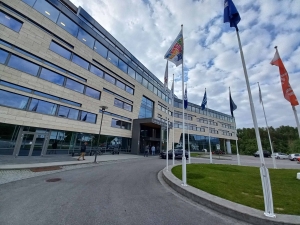
 By Marek Grzybowski
By Marek Grzybowski
The Norwegian Maritime Business provides jobs directly to approximately 90,000 people and generates products and services worth approximately NOK 500 billion annually. A significant part of revenues is provided by the export of goods and services. It is estimated that approximately 70% to 80% of the revenues of the Norwegian maritime business come from exports.
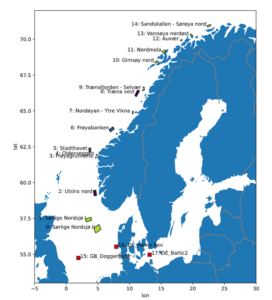
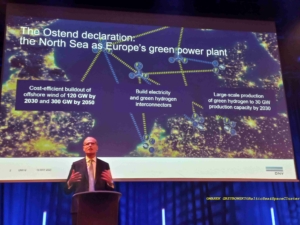
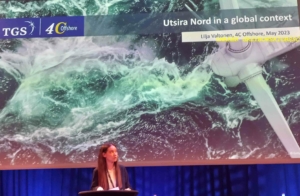
The Norwegian maritime business is naturally driven by the country’s location on the second longest coastline in the world. Norway has always been driven by nature, especially the ocean, say the Norwegians. The country has the second longest coastline in the world after Canada, with a length of 100,915 km, including all islands. The North Sea provides energy, innovation, food resources and products and services exported around the world.- Our current climate challenges impact many people beyond Norway’s borders, and the need for innovative solutions is more urgent than ever. The good news is that Norway has already made great progress in reducing emissions, Innovasjon Norge reported after business meetings.
The list is long and includes cutting-edge technologies in offshore wind, green hydrogen, aquaculture, electric ferries and workboats, and green port infrastructure. Not to mention autonomous ships, lots of IT solutions and many, many more – informs Innovasjon Norge.

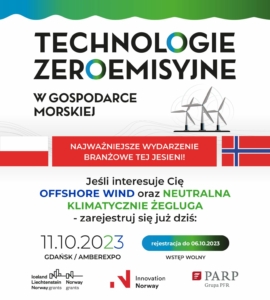
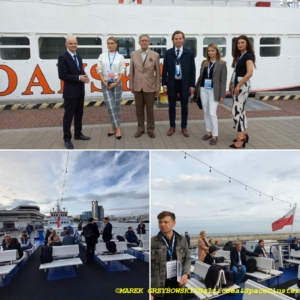
Innovative Norwegians and Polish clusters
Maritime transport, oil and gas, the offshore wind industry and fish are not the only export products of the Norwegian maritime cluster, as members of the Baltic Maritime and Space Cluster could see for themselves during study visits and meetings with companies delegated by Innovasjon Norge to an industry meeting during BALTEXPO 2023 fair.
The information provided during the meeting by Mateusz Kowalewski, president of the Polish Maritime Technology Forum, Dariusz Jellonek, president of the Polish Association of Shipping Entrepreneurs, Marek Grzybowski, president of the Baltic Maritime Cluster and Jacek Milewski, financial director of CRIST, coordinator of BSSC ZEV HUB, was received with great interest.
During the meetings, it turned out that companies operating in the Polish and Norwegian maritime business have great potential for cooperation. We wrote about this in more detail here
Meetings similar to those in Poland were held in many countries, including France, Norway, China, Japan, and the United States.
Norway is a pioneer of maritime innovation
Norway is a pioneer in the development of ecological and innovative solutions in the maritime industries. The Norwegian government is focusing its activities and – let us emphasize this – considerable financial support, to make sustainable development more dynamic. Innovative ships and their equipment, IT and space solutions, and new technologies are designed. All efforts are focused on reducing CO2 emissions and harmful effects on the environment.
Polish companies, engineers and employees operating in the Shipbuilding and ships repair Iindustry also participate in these processes. The BSSC ZEV HUB, based on the activity of the CRIST shipyard and the competences of the ASE Technology Group, will serve to develop closer cooperation.
There are currently around 100 electric ferries in operation in Norway. The world’s largest all-electric ferry to have entered service so far in Norway. This is the first of three electric ferries operated by Bastø Fosen.
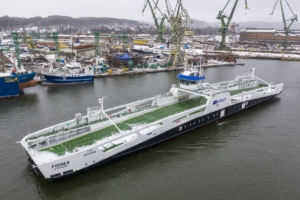

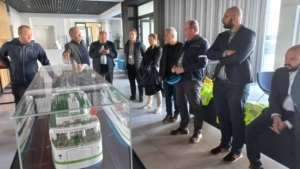
From Polish shipyards to Norwegian fjords
The world’s first all-electric ferry MS Ampere and the first fast electric ferry MS Medstraum were designed in Norway. MS Ampere was built in a Polish shipyard and equipped with final equipment in Norway. Ampere has received several international awards, including the Seatrade Clean Shipping Award in 2015 and the Ship Efficiency Award in 2018. It was also named Ship of the Year in 2014.
Many ferries were also built in Remontowa and they still operate on many routes connecting the Norwegian islands. Ships were built to service fish farms, allowing them to transport fresh fish and provide feed at the CRIST shipyard. Service ships for offshore industries were also built in the CRSIT Gdynia docks.
An interesting solution is MF Hydra – the world’s first ferry powered by PEM fuel cells powered by liquid hydrogen. These cells contain enough fuel for 12 days of sailing. We wrote more about this topic here
New hydrogen ferries are currently being built for the three-hour journey between Bodø and Lofoten. The project is financed by the Norwegian Public Roads Administration (NPRA). The beneficiary is Torghatten Nord. The connection will be launched in 2025 and will be the longest and most exposed to difficult hydrometeorological conditions ferry line in Norway.
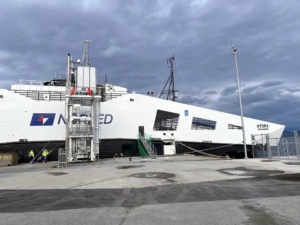
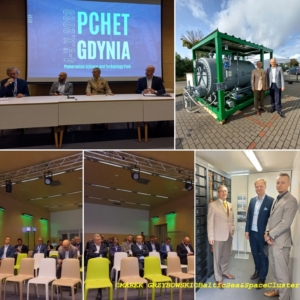
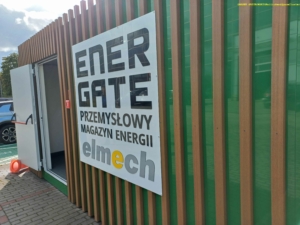
Hydrogen, Ammonia and fishing ship course
As part of the EU-funded ShipFC project, the Viking Energy ship will be built. The ship will be equipped with the world’s first ammonia fuel cell system.
Norwegian hydrogen supports the decarbonization of the maritime sector. Norway is a partner of the European Hydrogen Backbone initiative to build new hydrogen infrastructure. In Norway, work is being done to develop and launch hydrogen corridors to provide clean fuel for maritime transport.
These activities are connected with the activity of the Pomeranian Hydrogen Cluster and the Gdynia Hydrogen Valley as well as the activity of the Port of Gdynia in order to development fo the hydrogen sea port infrastructure, we wrote about it: here.
Norway has enormous expertise in aquaculture and fishing, thanks to its extensive, diversified coastline and centuries-old fishing traditions. These industries may have a large impact on the environment, Norwegian technology allows fish to be produced sustainably and with less impact on the environment.
Poland is one of the leading importers of fish from Norway. Therefore, it is interesting to know that “approximately 82% of the weight from Norwegian fisheries and fish farms is used,” reports Business Norway.
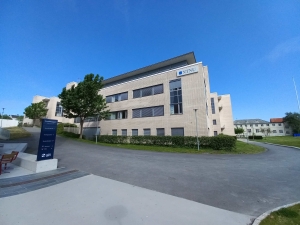
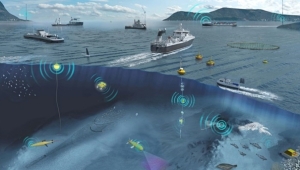
Offshore wind energy generates new jobs
There is a Marine Energy Test Center (METCentre) in Norway. It is the world’s leading test center for offshore wind energy. In September 2022, METCentre received licenses to install four new offshore wind turbines in the North Sea
A new report by the Norwegian analytical company Menon Economics announces that offshore wind energy in floating installations may be one of the largest job generators in Norway by 2050.
The report states that the offshore floating wind industry can provide over 52,000 jobs.
Norwegian ports investing in the offshore wind energy projects could generate NOK 8.4 billion (approximately EUR 727 million) annually and employ approximately 6,400 people by 2030.
Experts about the capabilities of Møre Ocean Lab
At the beginning of December, as part of the ÅKP initiative called Blue Innovation, over 40 experts discussed about developing of the Møre Ocean Lab’s research infrastructure. The meeting gathered specialists from both business and academic circles in the maritime sector. The focus was on intensifying interdisciplinary cooperation. The primary goal is to identify and explore the unique opportunities that Møre Ocean Lab offers.
The Møre Ocean Lab is located near Ålesund and it is intended to be a full-scale testing laboratory that will be used for marine research and industry. This is a unique project led by NTNU (Norwegian University of Science and Technology) Ålesund. It is carried out together with partners such as SINTEF, Runde Environmental Center and GCE Blue Maritime Cluster. Møre Ocean Lab includes several significant initiatives. The most famous is the “Digital Ocean Space” project supported by the Norwegian Research Council with NOK 30 million.
– This project helps to create important infrastructure related to the Møre Ocean Laboratory, explains project manager and head of department at NTNU, Hans Petter Hildre, on the Blue Maritime Cluster website.
Hans Petter Hildre mentions: “We have invested in a larger work boat, the delivery of which is scheduled for 2024. The boat will be adapted for autonomous operation. In addition, at NTNU in Ålesund, we are developing an advanced land-based control center for the Møre Ocean Lab. This work also includes the installation of several measurement buoys and sensors in the surrounding ocean space” – informed GCE Blue Maritime Cluster.
Kristian Steinsvik, managing director of SINTEF Ålesund and one of the leading partners in the Møre Ocean Lab project, emphasizes that: “By streamlining the process of testing new ideas, Møre Ocean Lab will accelerate the pace of innovation in the industry.”
The Maritime University of Gdynia with the Maritime Institute, the Gdańsk University of Technology and the University of Gdańsk operating in the SEA EU network , Memebers of the Baltic Sea & Space CLuster, have many areas to undertake joint research.
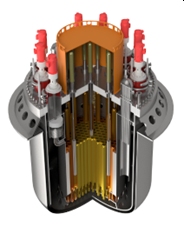
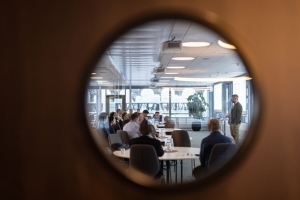
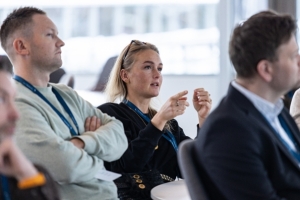
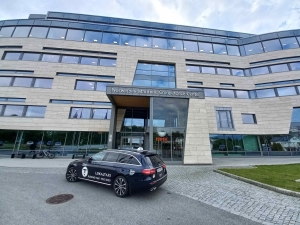
Nuclear power for ship
The GCE Blue Maritime Cluster in Ålesund hosted its third seminar on offshore nuclear energy in the last week. It was attended by a number of key Norwegian and international experts to discuss the application of the latest developments in the use of nuclear energy in the commercial maritime industry.
Determining its role in the ecological transformation in the maritime sector was also discussed. It is noted that “The seminar provided an overview of current knowledge on the potential and challenges associated with the use of nuclear energy in Norway.”
During the meeting, solutions that would speed up this process were reviewed. A number of Norwegian projects related to offshore nuclear energy were presented.
Main attention was paid to the latest achievements and changes in regulations, emphasizing the international importance of the topic.
The first part of the seminar included a comprehensive review of the global state of offshore nuclear energy. Representatives of Lloyds Register and Norsk Kjernekraft shared their experience and talked about the commercialization of nuclear energy in Norway.
Eirik Ovrum from DNV presented a forecast for the implementation of ecological solutions by 2050. He analyzed the role of introducing nuclear propulsion on ships in the ecological transformation of maritime transport.
– The study shows that nuclear propulsion, in the medium and long term, can play a valuable role in the ecological transformation of the blue economy – GCE Blue Maritime Cluster reports on its website.
With the reactor to the fjord
In the second part of the seminar, national and international projects were presented. The most important points of this session included the speech of prof. Jan Emblemsvåg from NTNU Ålesund on the NuProShip project, as well as the upcoming international nuclear conference in Ålesund. Øyvind Kamsvåg from Ulstein spoke about the development of various nuclear propulsion concepts that can be used on ships. Information about IT solutions was provided by representatives of Core Power and Lucid Catalysts. Tobi Meniez and Chirayu Batra discussed advances in nuclear energy technologies and strategies for decarbonization and access to clean energy.
“Norway takes Swedish nuclear technology to the high seas” – informed Klimavenner.no. The main goal of NuProShip (Nuclear Propulsion of Merchant Ships 1) is to adapt the Generation IV SMR reactor to the needs of international shipping. The technical starting point is an already approved project with a capacity of 25-55 MW. The project aims to examine the feasibility of three different concepts of using nuclear reactors in fourth generation solutions. “NuProShip I combines NTNU’s maritime competence with Norway’s potential for large thorium deposits, which many in Sweden has little overview of. However, the Norwegian academic environment is therefore well informed about the Swedish nuclear power and the development of the SMR market and has maintained contact with both KTH and other actors” – added Klimavenner.no
Professor Jan Emblemsvåg received NOK 10 million for the project to be implemented in 2023-2024. NuProShip I (Nuclear Propulsion of Merchant Ships 1) is to study the feasibility of three different nuclear reactor concepts within the Generation IV domain. In addition to a smaller variant of LeadCold and KTH’s Swedish further development of the BREST reactor, a Molten Salt Reactor (MSR) and a high-temperature, helium gas cooled reactor (HTGR) will also be studied. On the international arena of nuclear power, the Norwegian University of Science and Technology (NTNU) is taking a completely new and innovative step towards the SMR development, which can over time give major implications for power generation in general. By starting at sea, where NTNU has world leading maritime competence, this project will help Norway maintain a leading position as a seafaring nation.
Norwegians have already undertaken several initiatives related to the use of nuclear energy. Among others, the Institutt For Energiteknikk (IFE) and a shipowner operating fishing vessels joined forces to build a mini-reactor with a capacity of approximately 10 MW for larger trawlers. This is an advanced hydrogen project that was developed as a project enabling the use of nuclear energy.
In the fjord, south in Ulsteinvik, Poland’s well-known shipbuilding corporation Ulstein Group is working on a concept for a thorium bunkering vessel equipped with a thorium-based reactor to provide electricity to electric ships in offshore waters in the high north. distant, which would currently prevent the use of electric ships due to the lack of charging capabilities.
Photos: GCE Blue Maritime Cluster, Marek Grzybowski, Klimavenner.no.
